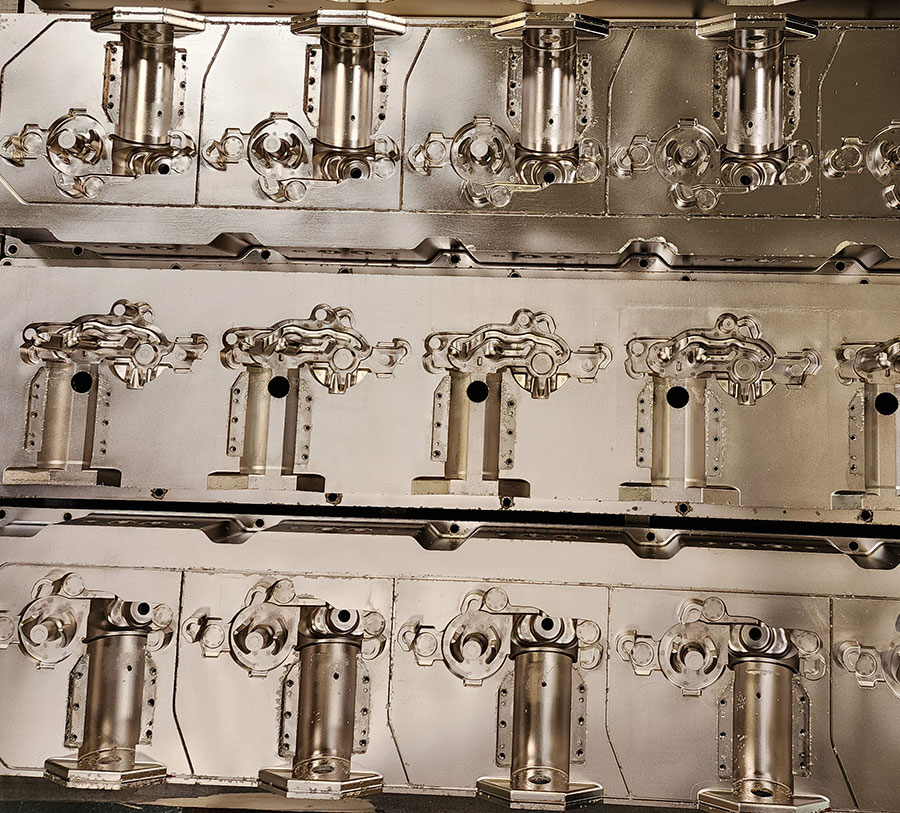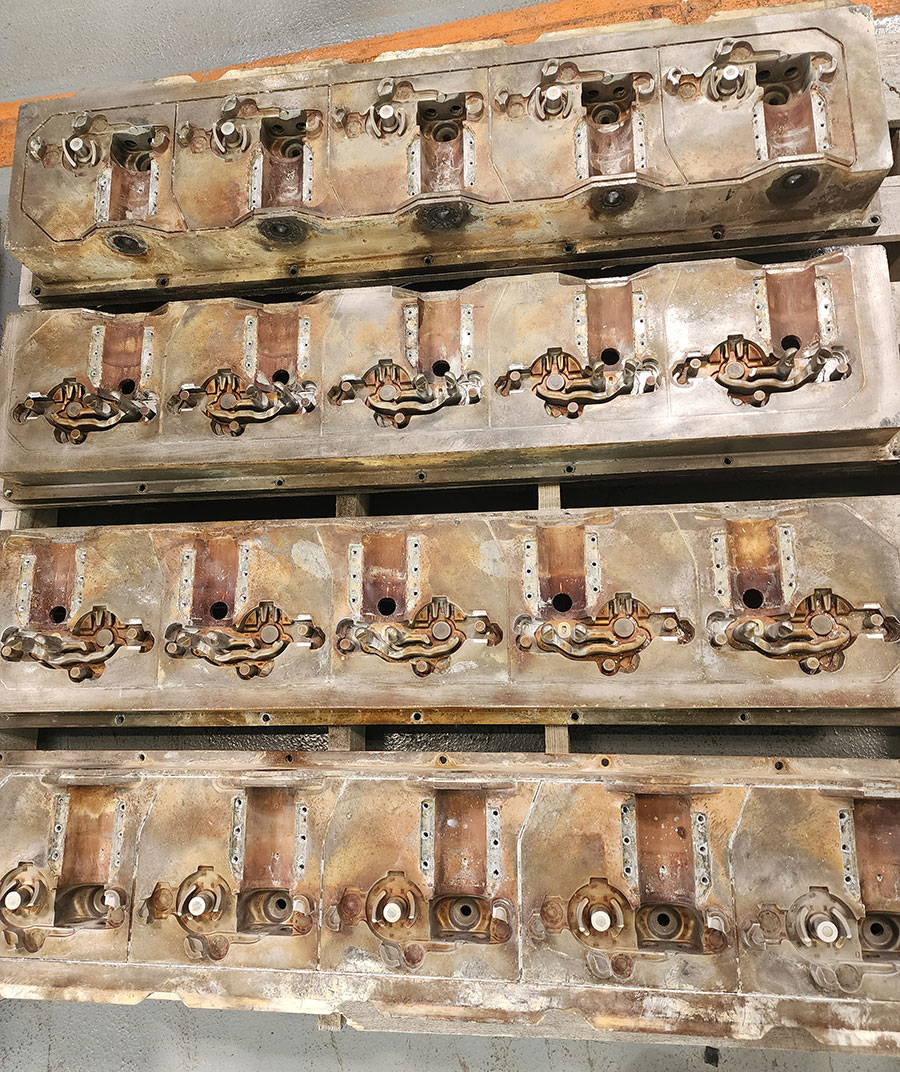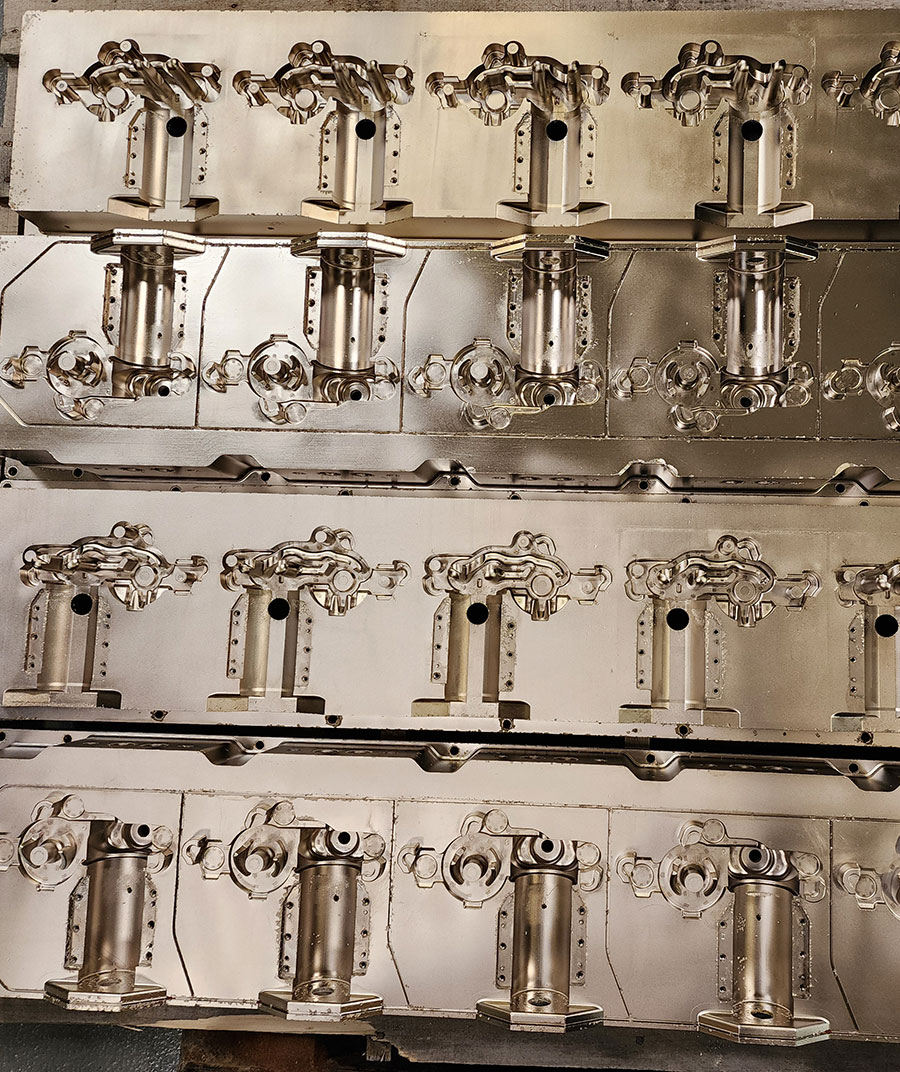THE CHALLENGE
The corrosion in the “Before” image is the result of steam and water from the EPS foam molding process. In a typical molding cycle, steam is initially used to expand the foam, followed by cooling water to stop the expansion. Each of these cycles can range from 30 seconds to 2-3 minutes, and it's not uncommon for a mold to undergo 100,000 cycles or more annually, depending on production demand. The specific cavities in this project have likely endured approximately 250,000 cycles since they were last coated.
THE SOLUTION
Our 6-Point Bales Plating Process:
- Stripping: We chemically clean and remove the existing Nicklon coating using our proprietary stripping process.
- Initial Quality Inspection: After stripping, we perform a quality inspection to ensure there is no additional damage that could affect the molded product. If any issues are found, we notify the customer.
- Glass Beading: The components are then glass beaded to ensure they are thoroughly clean and prepared for plating.
- Nicklon Plating: Following preparation, the parts are run through our Nicklon plating line.
- Final Inspection: The plated parts undergo a final inspection to verify adhesion, plating thickness, appearance, and other critical parameters.
- Shipping: Once they pass final inspection, the parts are sent to shipping to be carefully packed.
THE RESULT
Thanks to Bales’ Nibore™ coating and precision polishing, this molder now gets:
- Better mold performance
- Faster cycle times
- Longer-lasting molds
This real-world example shows how the right surface treatment can make high-volume manufacturing more efficient and reliable for the long haul.
Click on a photo to enlarge






